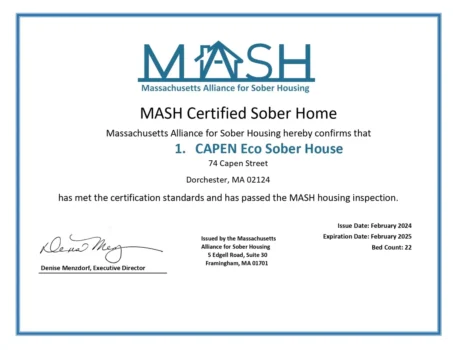
On the other hand, aripiprazole did not interfere with the alcohol‐induced impairment in motor balance as measured by rotarod test 179. Furthermore, repeated systemic aripiprazole administration decreases alcohol intake in alcohol‐preferring rats 180, while single oral administration dose‐dependently decreases alcohol self‐administration in outbred rats 181. In addition, aripiprazole has been shown to reverse alcohol‐induced place preference and anxiety‐like behaviour in mice 182. Throughout this article, the term “alcohol abuse” is used to describe any type of alcohol consumption that causes social, psychological, or physical problems for the drinker.
Your Brain on Alcohol
In contrast to the dorsal striatum, dopamine release in the NAc is increased following chronic alcohol use in male cynomolgous macaques 22, 24. The current study indicates that long-term alcohol consumption decreased dopamine release in the putamen of male rhesus macaques (regardless of abstinence status) and in the caudate of the multiple abstinence monkeys. Interestingly, we found an increase in dopamine release in the caudate and no change in the putamen of female macaque drinkers. The effects of these alcohol-induced changes in dopamine release must be considered with other factors contributing to dopamine signaling (e.g., dopamine uptake/transporter activity).
How Does Alcohol Affect Your Brain?
Bivariate correlation analyses were conducted to investigate the relationship between 11C-(+)-PHNO BPND in AUD participants alone and the various clinical (demographic, questionnaire) as well as laboratory measures (craving, IVASA measures). Blackouts are gaps in a person’s memory of events that occurred while they were intoxicated. These gaps happen when a person drinks enough alcohol that it temporarily blocks the transfer of memories from short-term to long-term storage—known as memory consolidation—in a brain area called the hippocampus. Serotonin (5-HT) can bind to receptors that activate proteins within the cell called G proteins. Activation of these proteins, in turn, affects ion channels in the cell membrane and induces the formation of signaling molecules (i.e., second-messenger molecules). Second messengers also can act on ion channels or travel to the nucleus to alter gene expression.
ETIOPATHOGENESIS OF ALCOHOL DEPENDENCE
Participants underwent a standard proton density weighted brain magnetic resonance imaging (MRI) on a Discovery MR750 3 T MRI scanner (General Electric, 3 T MR750) to aid region of interest delineation of PET images. The good news is that within a year of stopping drinking, most cognitive damage can be reversed or improved. This activity provides 0.75 CME/CE credits for physicians, physician assistants, nurses, pharmacists, and psychologists, as well as other healthcare professionals whose licensing boards accept APA or AMA credits. We are a community of more than 103,000 authors and editors from 3,291 institutions spanning 160 countries, including Nobel Prize winners and some of the world’s most-cited researchers.
Moreover, dopamine systems appear to be inhibited after alcohol withdrawal, and this inhibition can be reversed by alcohol consumption (Koob 1996). Interestingly, endogenous opiate systems could cause the decrease in the activity of dopamine systems that occurs during alcohol withdrawal (Koob 1996). Of particular importance regarding the role of opiate systems in alcohol reinforcement is the recent finding that opiate receptor blockers (e.g., naltrexone) reduce craving and alcohol consumption (Valenzuela and Harris 1997). The effects of acute alcohol consumption on serotonin receptors also have been investigated in so-called knockout mice, in whom certain genes (e.g., those coding for different serotonin receptors) have been experimentally inactivated so that the animals cannot produce the protein encoded by those genes. By studying knockout mice that lack a particular receptor, researchers can assess that receptor’s role in specific aspects of brain functioning and behavior, including responses to alcohol and alcohol consummatory behavior. For example, scientists have studied a strain of knockout mice lacking the 5-HT1B receptor with respect to the effects of acute alcohol exposure (Crabbe et al. 1996).

- According to one study, including mindfulness and meditation in addiction treatment can reduce the chance of relapse.
- Many people find the mental effects of alcohol consumption (e.g., euphoria) rewarding; this effect may lead to positive reinforcement and persistent alcohol-seeking behavior.
- Overall, the clinical utility of atypical antipsychotics has shown to be of some benefit in patients suffering from alcohol dependence and a concomitant psychiatric diagnosis including schizophrenia 148, 149.
- Alcohol dependence, a chronic relapsing psychiatric disorder, is a major cause of mortality and morbidity.
- Specifically, prefrontal regions involved in executive functions and their connections to other brain regions are not fully developed in adolescents, which may make it harder for them to regulate the motivation to drink.
This hypothesis is supported by the results of studies in animal models (Campbell and McBride 1995; Grant 1995; Wozniak et al. 1990), which also found that 5-HT3 receptor antagonists interfered with the serotonin-induced dopamine release in the brain’s reward systems. These findings may help explain the antagonists’ ability to reduce drinking behavior. Dopamine D2 receptor antagonists have been studied in human laboratory studies involving alcohol administration in dependent individuals and found to be effective in reducing craving. In a laboratory study involving 16 individuals with alcohol abuse and/or dependence, the D2 antagonist haloperidol was compared to placebo. The results of this small study demonstrated that haloperidol significantly decreased measures of craving, reduced impulsivity, and the amounts of alcohol ingested https://ecosoberhouse.com/article/alcohol-and-dopamine-how-does-it-affect-your-brain/ 144. The dopamine D2 antagonist flupenthixol has also been evaluated in a clinical study of 281 recently detoxified alcohol‐dependent patients 145.

The results demonstrated that treatment with the depot formulation of flupenthixol led to a significant increase in rates of relapse (85.2% on active treatment compared with 62.5% on placebo). A major concern with flupenthixol is results from studies demonstrating an increase in the risk of relapse in rodents as well as humans 146, an effect preferentially observed in males 147. Overall, the clinical utility of atypical antipsychotics has shown to be of some benefit in patients suffering from alcohol dependence and a concomitant psychiatric diagnosis including schizophrenia 148, 149. With regards to the VTA, both in vitro and in vivo studies show that alcohol increases the firing of dopamine neurons in the VTA projecting to NAc 75–79, 40.
These dual, powerful reinforcing effects help explain why some people drink and why some people use alcohol to excess. With repeated heavy drinking, however, tolerance develops and the ability of alcohol to produce pleasure and relieve discomfort decreases. We quantified current alcohol use with the Alcohol Use Questionnaire AUQ; 60 from which we calculated a “binge drinking score” 60. This score was log transformed to provide a Gaussian distribution suitable for parametric statistics. The Carolina Alcohol Use Patterns Questionnaire (CAUPQ 61) was used to estimate a total number of adolescent (0–21 years) binge episodes (see Supplementary Materials) and quarter-root transformed before statistical analysis. As mentioned previously, in addition the affecting the dopamine system directly, alcohol interacts with the mesolimbic dopamine system indirectly via several other neurotransmitters.

Ethanol potentiates GABA- and glycine-induced chloride currents in chick spinal cord neurons

Similarly, in a limited set of putamen slices from the female cohort, we observed a potential reduction in cholinergic driven dopamine release in alcohol monkeys relative to controls (Fig. S1). Once isolated from cholinergic influence, dopamine terminals from the multiple abstinence male subjects in control and alcohol treatment groups responded similarly to varying frequency stimulation. Our findings with blockade of β2-containing nAChRs resemble previous findings in rodent striatum both with respect to antagonist inhibition and decreased inhibition at higher/phasic stimulation frequencies. alcohol and dopamine Thus, the cholinergic contribution to dopamine release is conserved in primate striatum. We further explored the effect of long-term ethanol consumption on striatal cholinergic systems by examining gene expression of several nAChR subunits (α4, α5, α7, and β2) and markers for cholinergic interneurons (ChAT and vAChT).
- In addition, haloperiodol dose‐dependently reduced operant self‐administration of alcohol in rats 134 as well as decreased alcohol presentations in the self‐administration model 132.
- These include your age, gender, overall health, body weight, how much you drink, how long you have been drinking and how often you normally drink.
- Other times, the consequences can be more serious – for example if we say something hurtful we regret later on, or try to drive ourselves home.
A phenomenon called long-term potentiation (LTP) appears to be fundamental for memory formation (Bliss and Collingridge 1993). LTP is a sudden but lasting increase in the overall level of excitatory neurotransmission in the hippocampus, a brain region involved in memory. In general, LTP seems to require activation of glutamate receptors and inhibition of GABAA receptors. Some studies have shown that short-term alcohol exposure inhibits glutamate receptor function (Lovinger et al. 1990) and stimulates GABAA receptor function in the hippocampus (Weiner et al. 1994).




